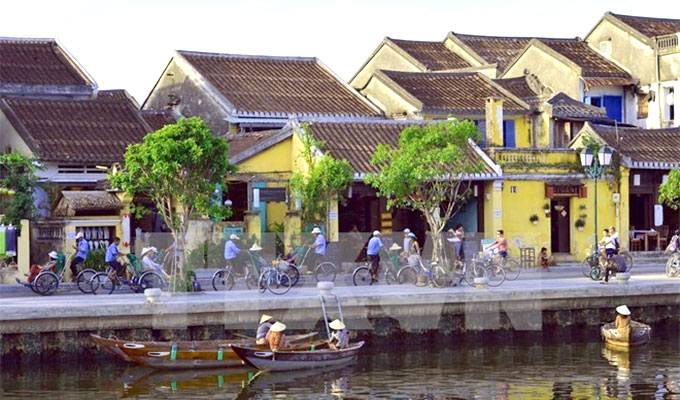Viet Nam’s tangible and intangible cultural heritages are a key part of the country’s tourism, so the preservation of the heritages is crucial for sustainable tourism development.

A corner of Hoi An ancient city
Viet Nam is home to 24 tangible and intangible cultural heritages, and natural heritages recognised by the United Nations Educational Scientific and Cultural Organisation (UNESCO), including eight natural heritage sites, 12 intangible cultural heritages and four documentary heritages.
According to Deputy Director General of the Viet Nam National Administration of Tourism Ha Van Sieu, the Politburo’s Resolution 08-NQ/TW on developing tourism into a spearhead economic sector stresses the preservation of the nation’s cultural heritage value.
Cultural tourism is hoped to become a key product of the sector, he said, adding it has drawn large numbers of domestic and international visitors, helping drive tourism growth, create jobs and enhance the local socio-economy.
Last year, UNESCO-recognised natural and cultural heritages welcomed more than 16 million visitors, including 7 million foreigners, earning more than 2.5 trillion VND (107.5 million USD) from entrance tickets.
Many localities have developed their own tourism brands based on their cultural heritages. The Complex of Hue Monuments, royal court music, woodblocks, the imperial archives of the Nguyen Dynasty and poetry on Hue royal architecture have made Hue city an alluring destination, as it received 1.8 million foreign visitors and pocketed 320 billion VND (13.76 million USD) from entrance tickets last year.
Meanwhile, Hoi An ancient city in central Quang Nam province also an attractive destination in Viet Nam. The city greeted 1.96 foreigners and raked in 219 billion VND (9.41 million USD) from entrance tickets in 2017.
Other destinations such as Ha Long Bay and Yen Tu (Quang Ninh province), Phong Nha-Ke Bang (Quang Binh), Trang An (Ninh Binh) and Black Lady Mountain (Tay Ninh) have been top tourism spots for years.
Mr. Sieu said the tourism sector and localities should map out a tourism plan in which tourism development must be made in tandem with respecting local cultural values.
Local people play an important role in branching out cultural tourism, he stated, saying that building digitalised database on Vietnamese cultural heritages, applying advanced technologies into the management of cultural heritages and developing smart tourism should be a focus.